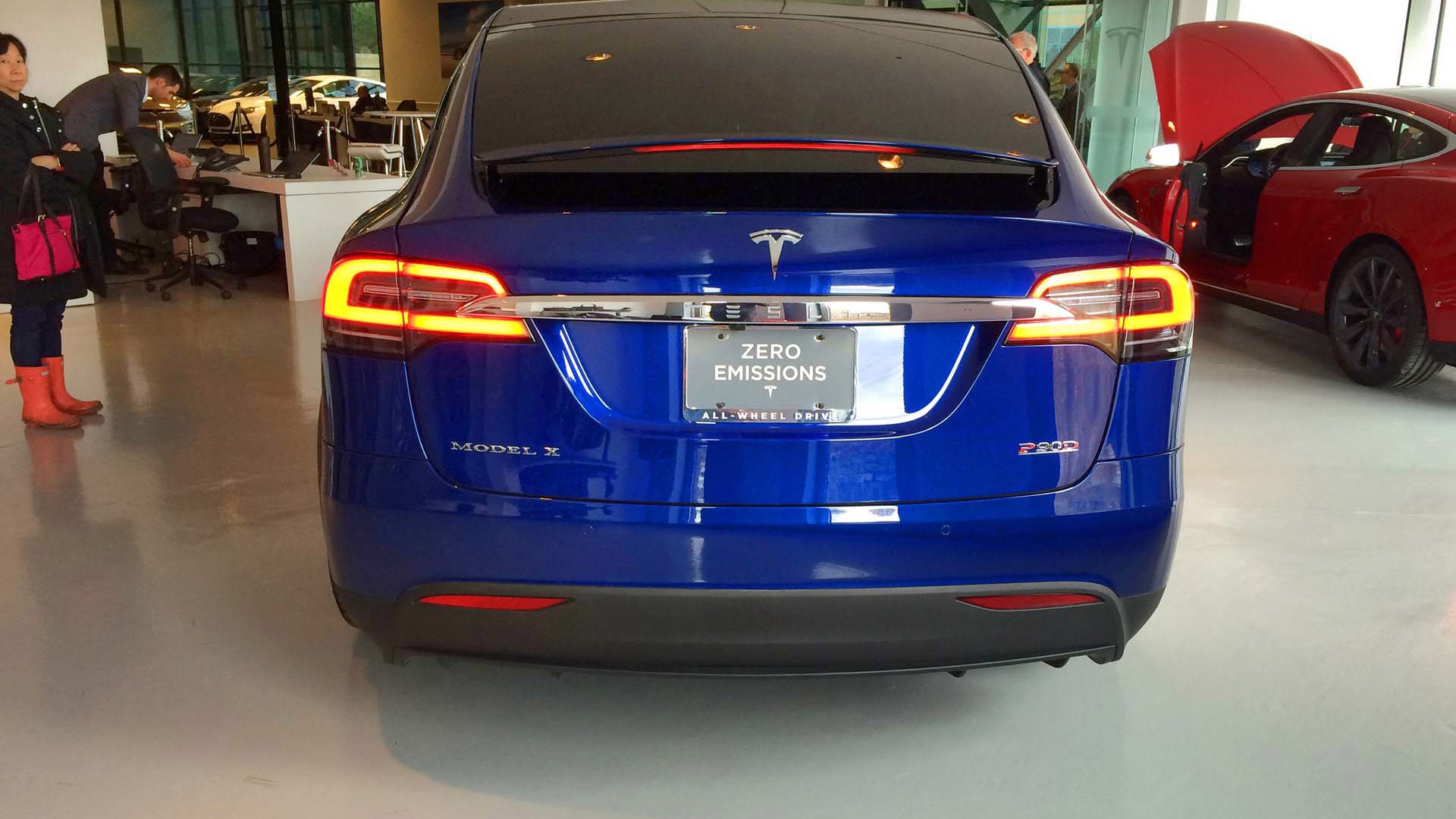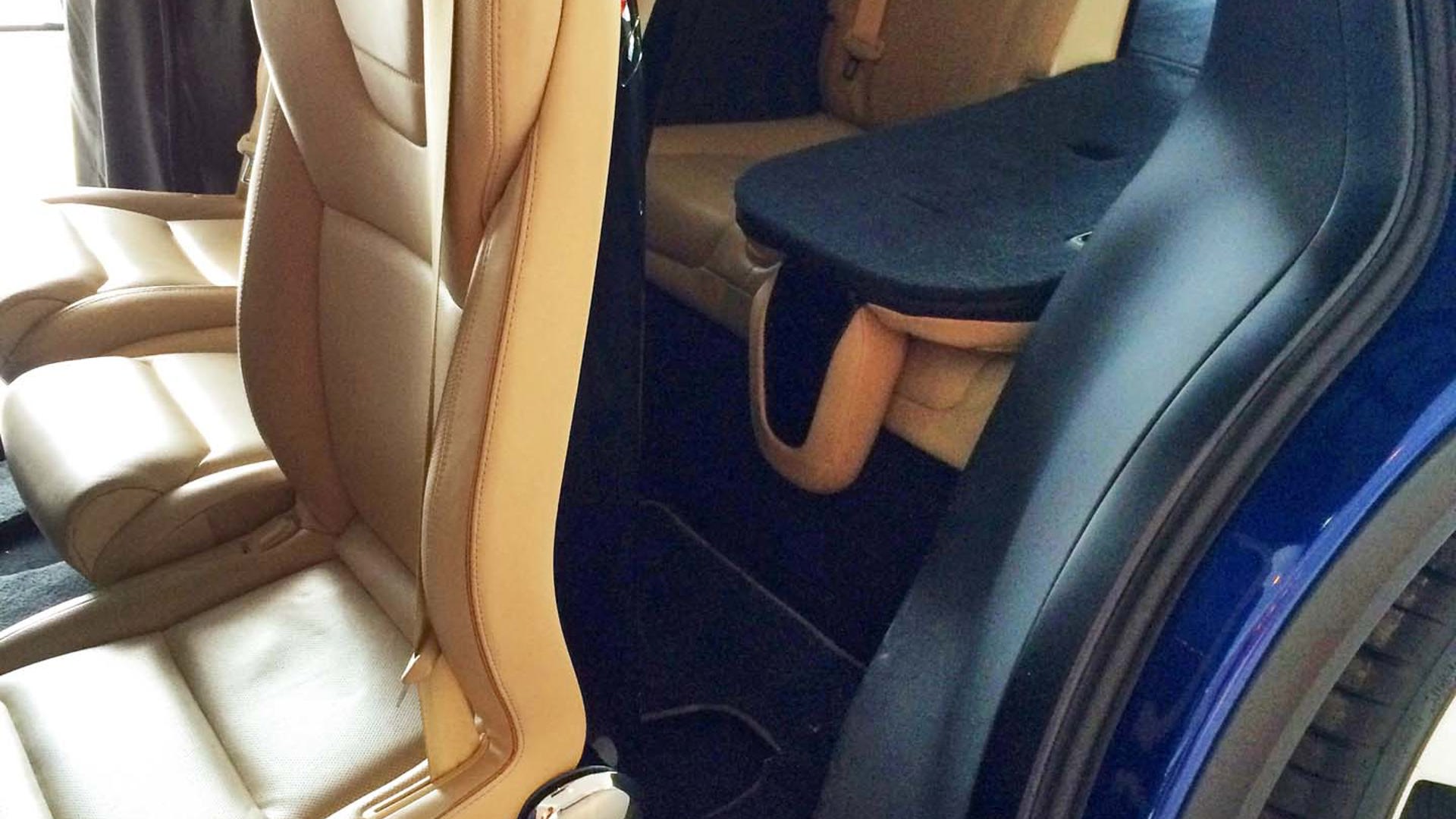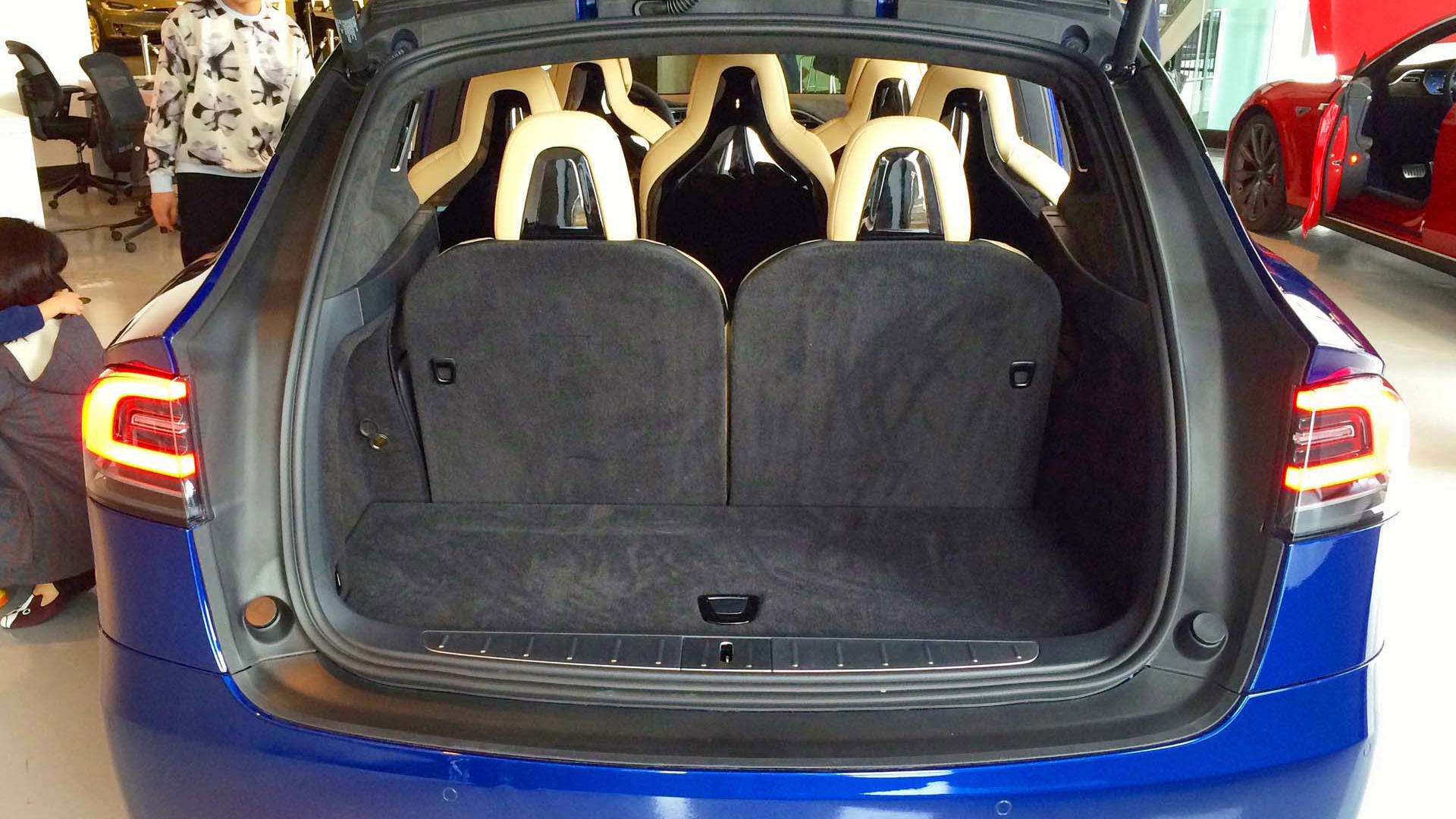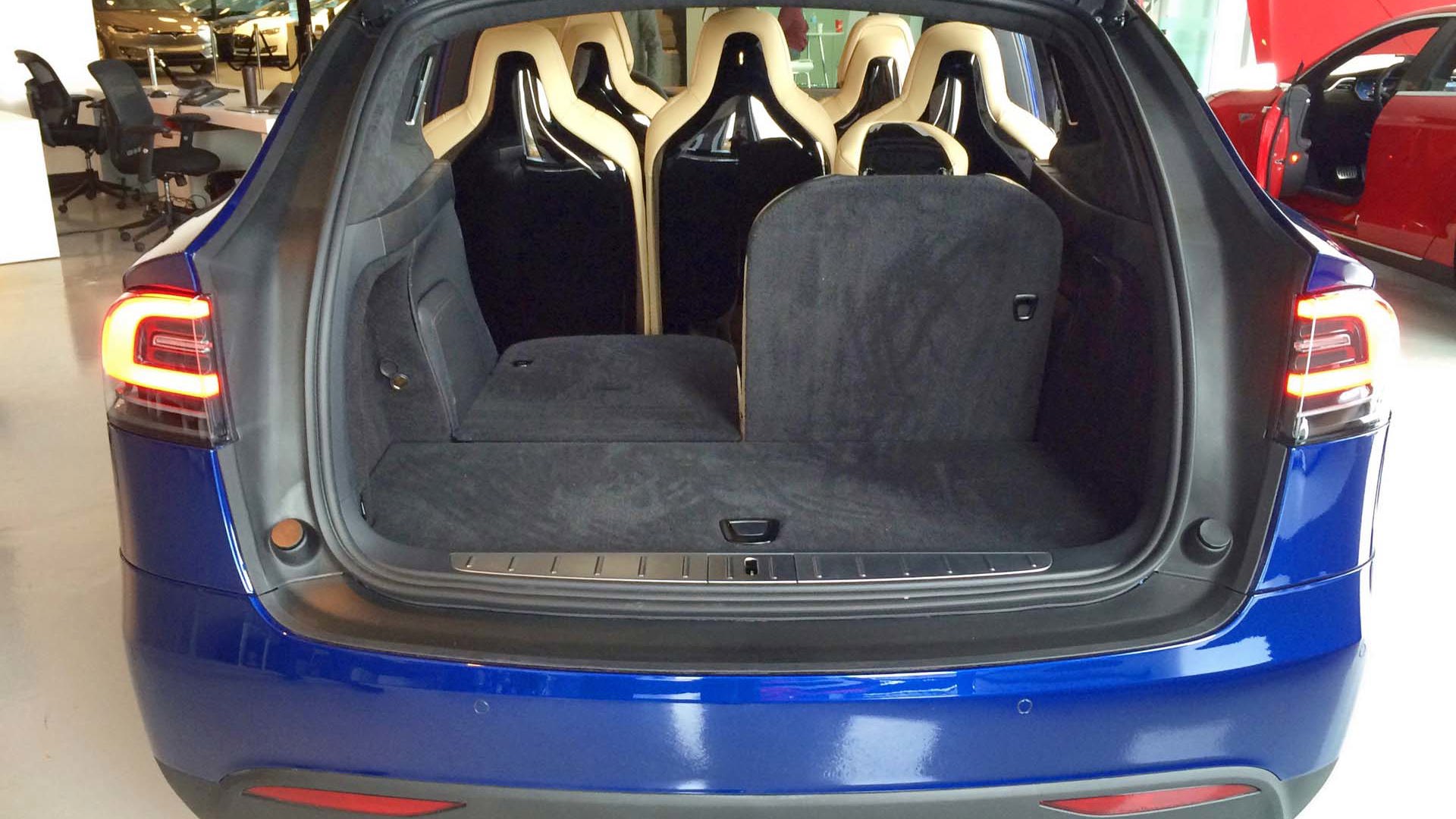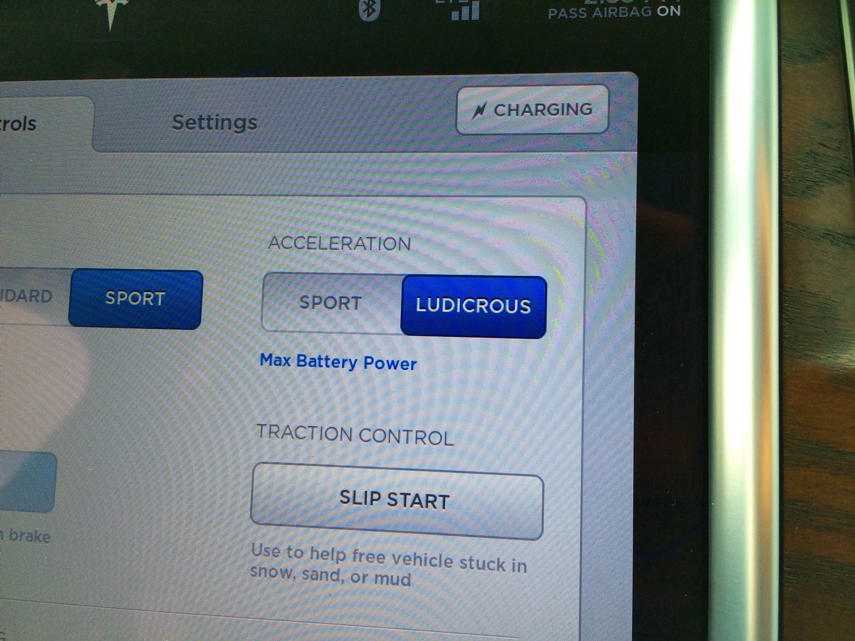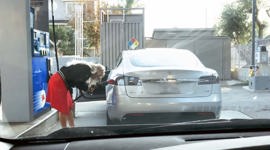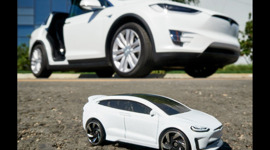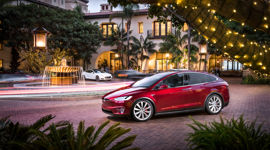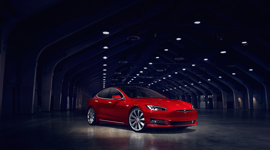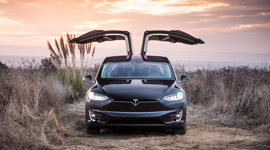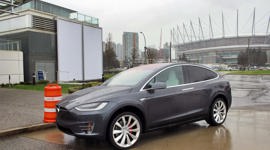Tesla recently invited media outlets to its Don Mills, Ontario dealership to view the new Tesla Model X and meet some new owners. From the invitation, it sounded to me like these buyers had already purchased and were picking up their car: “we are bringing Model X to customers in nearly 30 North American cities to test drive for the first time. Our focus is to have you be able to capture those “first impressions” of their drive, along with them being able to speak to their decision and experience of choosing to purchase a Tesla.”
My mistake: the key words above are ‘test drive’ and ‘customers’, not simply ‘drive’ and ‘owners’. This event was a sneak peek for would-be owners to see a Tesla Model X in the flesh. With its X-esque falcon-wing doors. the X is not only an unspeakably beautiful piece of machinery, it’s the fastest production SUV in the world. So it was like that pre-visit where pet lovers get to meet their newborn puppy still at its mother’s teat with littermates – you’re checking to see if the hips are wobbly, it plays well with others, and that it’s had all its shots – not the happy time you actually drive it home. Indeed, there were only three Model Xs onsite, one of which was for looking at, the others for test-drive sharing among the faithful.
The mood of the place was edgy. Turns out this event was also the negotiation stage wherein buyers were deciding on packages and upgrades with the on-site sales staff. Have you been keeping up with the state of Tesla’s profitability? Its sales people were understandably lobbying hard for customer upgrades. Customers were listening but listening very closely. Let’s face it: even if you’ve drunk the Electric Kool-Aid, you’re gonna be a hard-ass when it comes to money. Despite the open concept layout of the dealership, the buyers and sellers tried to sequester themselves away from the crowd and parley privately. Rich people didn’t get rich by giving their money away. No customers seemed interested much in talking to me.
So instead of pulling teeth from cautious shoppers, I opted for a tour of the X and then a drive by Tesla Canada’s PR rep, Martin Paquet.

Smart and practical, if occasionally onanistic, design
It’s what Mad Eye Moody from the Harry Potter books called playing to your strengths. Like BMW’s i electric vehicles (EVs), Teslas are built from the ground up to be electric, not adapted from an existing gasoline-powered car’s chassis. So Tesla made some wise decisions – like the placement of the battery.
At the risk of sounding obvious, batteries are heavy and been an albatross around the neck of EV producers from the beginning, literally weighing them down.
“Imagine taking an engine and smashing it like a pancake,” says Paquet.
“It wouldn’t work,” I helpfully observe. He pauses. Takes a deep breath. Smiles.
“But you can do that with a battery.” Tesla spreads the battery across the floor, lowering the centre of gravity. “If you look underneath the car, it’s almost like a formula one vehicle.” It improves driving dynamics. Remember the Weebles principle. Redistributing a battery’s boxy space also means extra room under the hood, seats and in the trunk for luggage, groceries, obstreperous employees and so on.
Most impressive, Paquet claims the Model X “has the lowest roll-over factor of any SUV because of the thousand-pound battery in the floor.” On the whole, it’s not a light vehicle weighing in at about 6,000 pounds (2,700-ish kg). To keep things as light as possible the X has an all-aluminum chassis and body panels.
Everything is cleverly modular and most space is very well used. All the seats slide sexily back and forth for about half a block. You can put your feet up provided there’s no passenger in the seat surrendering territory. The second row seats slides forward for easy access to the second and (optional) third row seats. “Usually in an SUV if you’re putting seats in the second row, certainly in the third row, you’ve gotta bend over. But now the whole side is open.”

So there you have it. The falcon-wing doors are actually practical spine saving devices, not some clever designer’s onanastic indulgence.
There’s a lot of clever OTT design to drive the price north, explained with a straight face. Example? The windshield washer fluid comes out from inside the wipers themselves.
Better still, the Premium Package features an Invisible Valet that opens the front door. (At first I thought he said invisible ballet, which, beheld, would be considerably less impressive.) It’s one of those human behaviour innovations that sounds ridiculous at first but is really insightful. Consider. You have your handcrafted artisanal latte in one hand and the scruff of an unhelpful employee’s neck in the other. How can you reach into your pocket for your key? Problem solved!
Once you’re in, put your foot on the brake and the door will shut.
Note the world’s biggest production windshield. It replaces that crossbar pillar across the top. You may not even notice the pillar’s gone at first because the brow of the windshield wears a gradually darkening tint like a ‘70s porn actor’s glasses. The reasons? It contributes to the aerodynamics somewhat, but mostly it enhances the panorama of your view. Seated in the X – remember how far back you can slide – you’ll find the effect is indeed expansive. Apologies if that ‘70s porn reference spoiled your mental picture somewhat but it’s relevant; if the tinting isn’t enough to shield your eyes from the sun on the horizon, visors, magnetically embedded in the remaining side pillars, rotate outwards. Brilliant.
Inside, the X is a bit more like a frequent flyer’s executive lounge than your daily commuting tootler: oak wood and Napa leather provide a soothing spa-like atmosphere. Similar to Model S, “the main focal point is the 17-inch touchscreen.” That’s not a typo. The 17-cin screen is cool but it must be a tempting distraction. You know those times when you’re at a concert or baseball game and end up staring at the screen instead of the actual performers? That can’t be good in traffic. Anyway, the screen controls everything from that soothing atmosphere to navigation to entertainment.
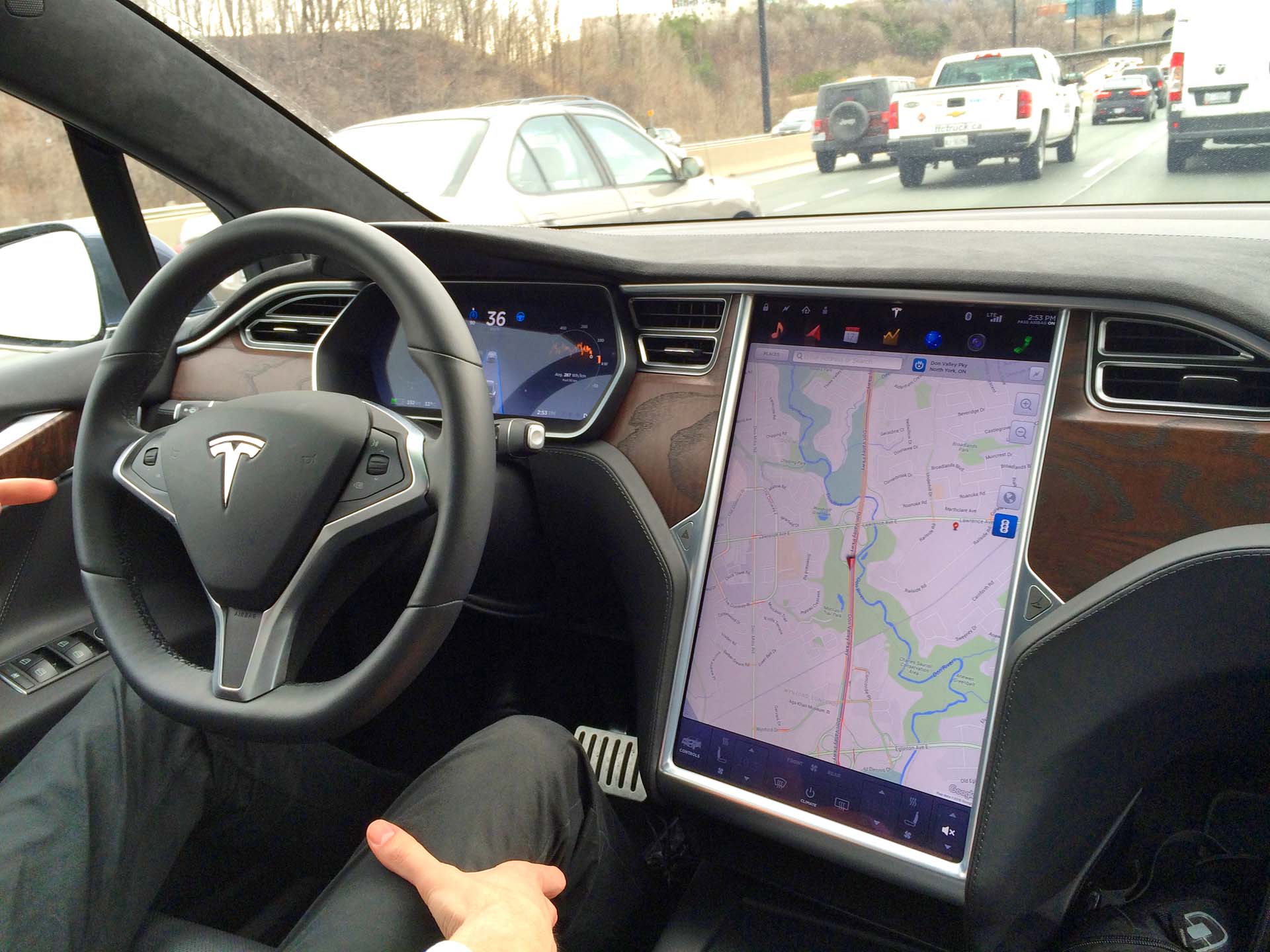
Range anxiety? No longer an issue. Driving? No longer one either.
I once emptied an electric smart car on the edge of a farmer’s field freshly sewn with silage. I recently wrung the range of a BMW i3 down to virtual fumes. But depending on the battery pack, a Model X will drive 300km to 400km per charge. Paquet claims it boasts “the lowest coefficient of drag for any SUV. For that reason it has similar range as the Model S sedan.” That’s enough juice to get you to the summer home from the city. It recharges itself going downhill and the regenerative braking is noticeable. It’s not as profound as the BMW i3, which will often bring itself to a full stop once you remove your foot, but it doesn’t coast long.
Anyway, range anxiety is over. Another famous feature of Teslas is the self-driving tech called Autopilot. It features, “12 sensors around the vehicle, forward-facing radar and a camera in the windshield. Together with GPS it uses all that constantly incoming information to self-steer on the highway.” Meanwhile, live traffic by GPS will navigate you based on how shitty the roads are.
Autopilot is already available with the Model S and Paquet predicts there will “probably be enhancements soon”. Probably is a safe bet. Three months ago, Elon Musk boldly predicted that all new Teslas will be able to drive themselves in two years. (And you thought he just wanted to make space travel viable. Talk about your under-achiever.)
We try autopilot. The X chimes like the introduction before an announcement at the airport. The computer reports data in real time on the screen with simple symbols. “The steering wheel is blue which means the car will steer on its own and the car ahead of us is blue which means Autopilot sees it and adapts. Now the lanes are blue, meaning the camera has recognized the lines on the road well enough to steer us.”

Self-driving cars are a legislator’s nightmare.
Consider: if I get in an accident with a fully automated car, do I sue the owner or the programmer? How will we license autonomous cars? However the technology is pretty much here and operating. The Tesla people have what sounds like a script: “We recommend keeping your hands on the wheel for the most part.” For those drivers who don’t? I asked on behalf of those terrified people in the next lane who notice you flossing or playing the ukulele rather than driving. “It will remind you at a corner. It will prompt you now and again to make sure that you’re still there and you’re still aware.”
He goes to say Autopilot is “a way to minimize the strain of driving and the stress. If you’re in bumper-to-bumper traffic, lane-aware steering and adaptive cruise control will ease the stress. On a long trip on the highway it takes the strain off your shoulders. We always recommend to keep your hands on the wheel or close to the wheel and be ready to take over at any time.”
By telling you to remain attentive, they make it clear whom Tesla thinks will be getting sued and it’s not the programmers. You can’t blame them but we just talked about technological innovations accommodating human behaviour. It’s only a matter of time before some bonehead puts on Autopilot and heads into the backseat for a nap on the Napa leather with his feet up.
What’s the drive experience like? Good question.
I wasn’t allowed to drive the Model X but was given a 20-minute spin in a P90D. Unlike some of our Teutonic friends, Tesla’s shorthand is sensible and easy to decode.
P is for performance. The numbers represent battery capacity. So, 90 is the number kilowatt hours, good for about 400km. 70 is good for about 300km. D stands for dual motor – the all-wheel drive. There’s one motor at the front axle and another in the rear. So the P90D is the Model X crème de la crème.
The base model of most Teslas is rear wheel drive (bless them; the way to a man’s heart is through his stomach, which RWD moves, not from pulling his shoulders) but, as you’d expect from an SUV, all Model Xs come with all-wheel drive.
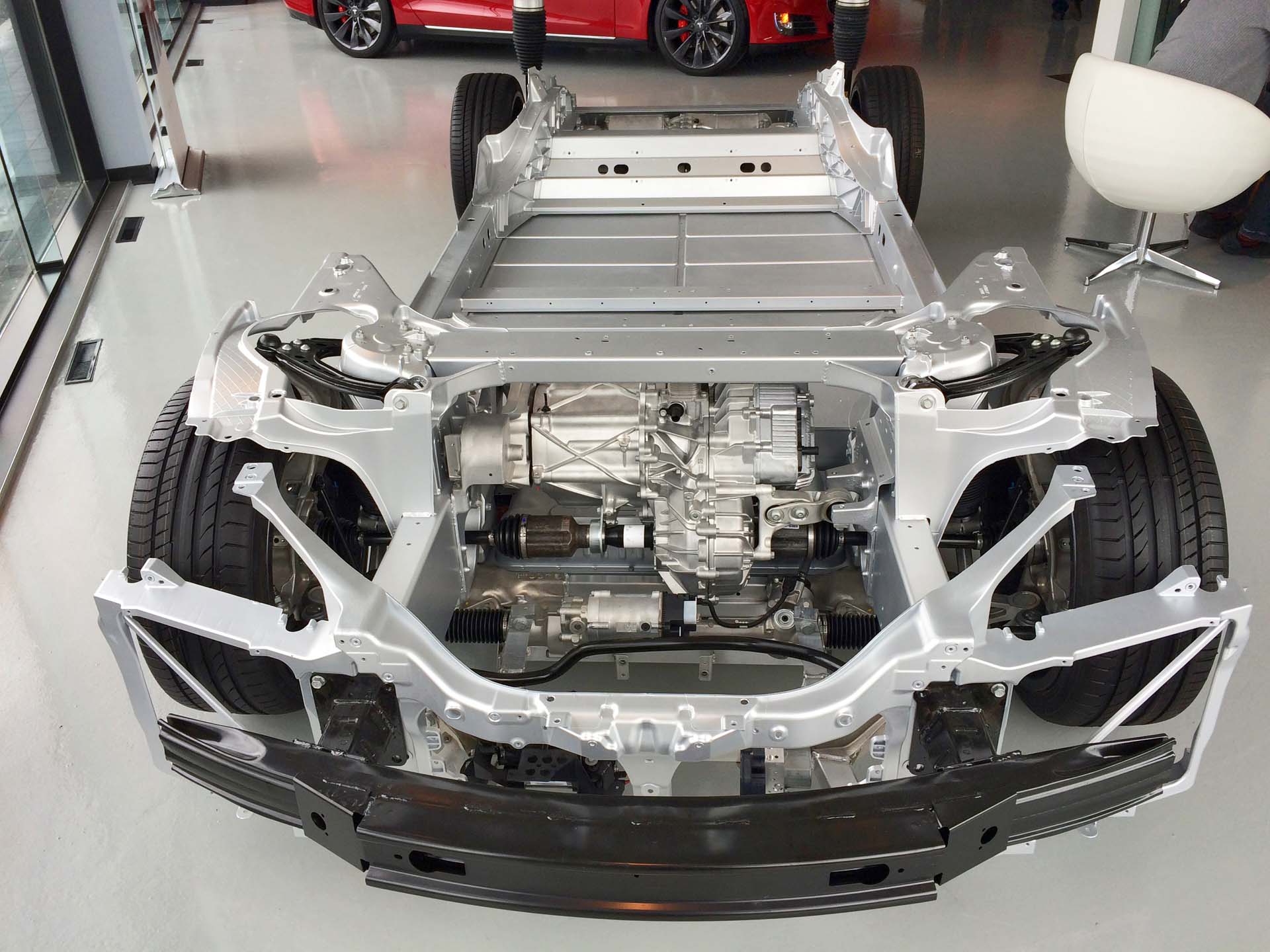
Being driven was still very sweet. Even this high up, you really feel the centre of gravity. And the acceleration is like the Millennium Falcon’s jump to light speed.
“It will take most supercars that were designed and engineered for speed. Ferraris, Lamborghinis are slower than the Model X.”
The Performance package includes a drive mode called ‘Ludicrous’, taking you from 0 to 100km in 3.4 seconds. He turns it on while we wait for a light to change. It goes green and foot goes down.
I can’t speak for the inertia knocking me back. The noise is like an elevator’s hum, barely detectable, but visually and physically it’s information overload. Functionally we’ve been transported to the future, already at the next light when the car from the next lane has barely passed the intersection.
The price? Remember the invitation and excuse for the event: It depends on your package and option choices but all in, Paquet estimated that the P90D we were in was closing in on $200k. Bring on the government rebates.







